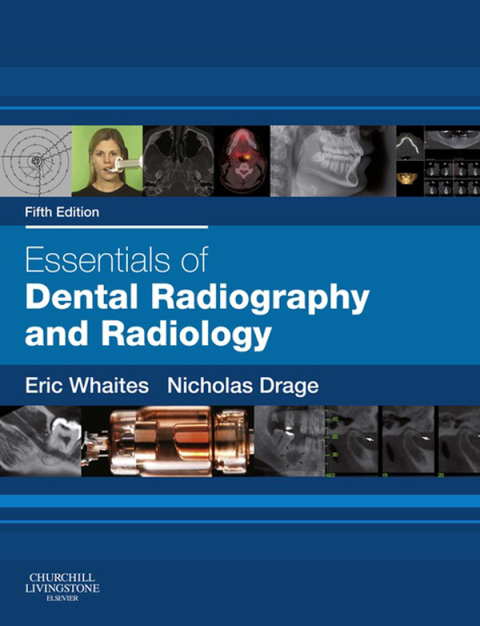Description
Efnisyfirlit
- Cover image
- Title page
- Table of Contents
- Dedication
- Copyright
- Preface
- Acknowledgements
- List of colour plates
- Additional online material
- Part 1: Introduction
- Chapter 1: The radiographic image
- Introduction
- Nature of the radiographic image
- Quality of the radiographic image
- Perception of the radiographic image
- Common types of dental radiographs
- Part 2: Radiation physics, equipment and radiation protection
- Chapter 2: The production, properties and interactions of X-rays
- Introduction
- Atomic structure
- X-ray production
- Interaction of X-rays with matter
- Chapter 3: Dental X-ray generating equipment
- Ideal requirements
- Main components of the tubehead
- Main components of the control panel
- Circuitry and tube voltage
- Other X-ray generating apparatus
- Chapter 4: Image receptors
- Radiographic film
- Digital receptors
- Chapter 5: Image processing
- Chemical processing
- Computer digital processing
- Chapter 6: Radiation dose, dosimetry and dose limitation
- Dose units
- Dose limits
- Dose rate
- Dose limitation
- Chapter 7: The biological effects associated with X-rays, risk and practical radiation protection
- Radiation-induced tissue damage
- Classification of the biological effects
- Practical radiation protection
- Footnote
- Part 3: Radiography
- Chapter 8: Dental radiography – general patient considerations including control of infection
- General guidelines on patient care
- Specific requirements when X-raying children and patients with disabilities
- Control of infection
- Footnote
- Chapter 9: Periapical radiography
- Main indications
- Ideal positioning requirements
- Radiographic techniques
- Positioning difficulties often encountered in periapical radiography
- Chapter 10: Bitewing radiography
- Main indications
- Ideal technique requirements
- Positioning techniques
- Resultant radiographs
- Chapter 11: Occlusal radiography
- Terminology and classification
- Chapter 12: Oblique lateral radiography
- Introduction
- Terminology
- Main indications
- Equipment required
- Basic technique principles
- Positioning examples for various oblique lateral radiographs
- Bimolar technique
- Chapter 13: Skull and maxillofacial radiography
- Equipment, patient positioning and projections
- Chapter 14: Cephalometric radiography
- Main indications
- Equipment
- Main radiographic projections
- Cephalometric posteroanterior of the jaws (PA jaws)
- Chapter 15: Tomography and panoramic radiography
- Introduction
- Tomographic theory
- Panoramic tomography
- Selection criteria
- Equipment
- Technique and positioning
- Footnote
- Chapter 16: Cone beam computed tomography (CBCT)
- Main indications
- Equipment and theory
- Technique and positioning
- Footnote
- Chapter 17: The quality of radiographic images and quality assurance
- Introduction
- Film-based image quality
- Practical factors influencing film-based image quality
- Typical film faults
- Patient preparation and positioning (radiographic technique) errors (Fig. 17.6)
- Quality assurance in dental radiology
- Digital image quality
- Practical factors influencing digital image quality
- Typical digital image faults
- Quality control procedures for digital radiography
- Footnote
- Chapter 18: Alternative and specialized imaging modalities
- Introduction
- Contrast studies
- Radioisotope imaging
- Computed tomography (CT)
- Ultrasound
- Magnetic resonance (MR)
- Part 4: Radiology
- Chapter 19: Introduction to radiological interpretation
- Essential requirements for interpretation
- Conclusion
- Chapter 20: Dental caries and the assessment of restorations
- Introduction
- Classification of caries
- Diagnosis and detection of caries
- Other important radiographic appearances
- Limitations of radiographic detection of caries
- Radiographic assessment of restorations
- Limitations of the radiographic image
- Suggested guidelines for interpreting bitewing images
- Chapter 21: The periapical tissues
- Introduction
- Normal radiographic appearances
- Radiographic appearances of periapical inflammatory changes
- Other important causes of periapical radiolucency
- Suggested guidelines for interpreting periapical images
- Chapter 22: The periodontal tissues and periodontal disease
- Introduction
- Selection criteria
- Radiographic features of healthy periodontium
- Classification of periodontal disease
- Radiographic features of periodontal disease and the assessment of bone loss and furcation involvement
- Evaluation of treatment measures
- Limitations of radiographic diagnosis
- Chapter 23: Implant assessment
- Introduction
- Main indications
- Treatment planning considerations
- Radiographic examination
- Postoperative evaluation and follow-up
- Footnote
- Chapter 24: Developmental abnormalities
- Introduction
- Classification of developmental abnormalities
- Typical radiographic appearances of the more common and important developmental abnormalities
- Radiographic assessment of mandibular third molars
- Radiographic assessment of unerupted maxillary canines
- Chapter 25: Radiological differential diagnosis – describing a lesion
- Introduction
- Detailed description of a lesion
- Footnote
- Chapter 26: Differential diagnosis of radiolucent lesions of the jaws
- Introduction
- Step-by-step guide
- Typical radiographic features of cysts
- Typical radiographic features of tumours and tumour-like lesions
- Typical radiographic features of bone-related lesions
- Footnote
- Chapter 27: Differential diagnosis of lesions of variable radiopacity in the jaws
- Typical radiographic features of abnormalities of the teeth
- Typical radiographic features of conditions of variable opacity affecting bone
- Summary
- Typical radiographic features of soft tissue calcifications
- Typical radiographic features of foreign bodies
- Chapter 28: Bone diseases of radiological importance
- Introduction
- Developmental or genetic disorders
- Infective or inflammatory conditions
- Hormone-related diseases
- Blood dyscrasias
- Diseases of unknown cause
- Chapter 29: Trauma to the teeth and facial skeleton
- Introduction
- Injuries to the teeth and their supporting structures
- Skeletal fractures
- Fractures of the mandible
- Fractures of the middle third of the facial skeleton
- Other fractures and injuries
- Chapter 30: The temporomandibular joint
- Introduction
- Normal anatomy
- Investigations
- Main pathological conditions affecting the TMJ
- Footnote
- Chapter 31: The maxillary antra
- Introduction
- Normal anatomy
- Normal appearance of the antra on conventional radiographs
- Antral disease
- Investigation and appearance of disease within the antra
- Other paranasal air sinuses
- Chapter 32: The salivary glands
- Salivary gland disorders
- Investigations
- Bibliography and suggested reading
- Index







Reviews
There are no reviews yet.